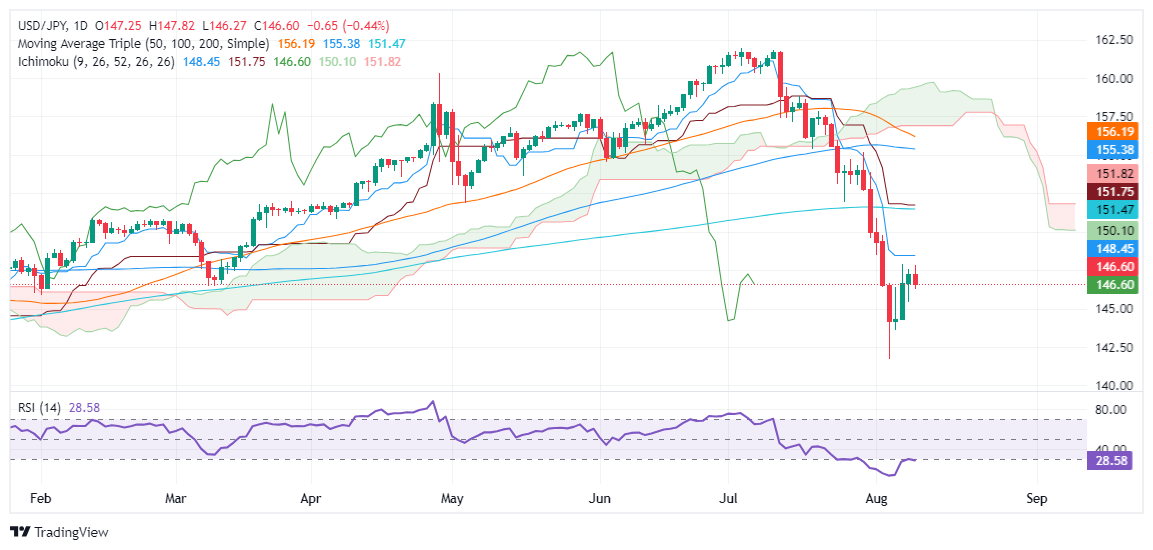- USD/JPY is falling after failing to overcome the resistance at 148.00 and is extending its downtrend below 147.00.
- The bearish momentum is intensifying; the RSI is close to the oversold level, indicating the potential for further declines.
- Below 146.00, key support levels include 145.44, 144.28 and 143.61; above 147.00, resistance targets are 147.89 and 148.45.
USD/JPY is falling back after failing to overcome the 148.00 resistance and extending losses below the 147.00 level, erasing three days of gains. At the time of writing, the central pair is trading at 146.58, down 0.48%.
USD/JPY Price Forecast: Technical Outlook
On Thursday, I wrote: “USD/JPY has turned bearish despite a recovery that saw the pair rise from below 144.00 to current exchange rates following dovish comments from a Bank of Japan deputy governor.”
As risk appetite returned, USD/JPY resumed its downtrend. Buyers failed to reach the weekly high of 147.89, which further exacerbated the pair’s decline below 147.00.
The momentum is bearish, although the Relative Strength Index (RSI) is fluctuating near the oversold zone.
If USD/JPY breaks below 146.00, sellers will no doubt attack the August 8 low at 145.44 and then the August 7 low at 144.28. Once these levels are breached, the next support would be the August 6 daily low at 143.61, followed by the recent cycle low at 141.69.
On the other hand, if the pair rises above 147.00, the next resistance will be the weekly high at 147.89 before challenging 148.00. Next is the Tenkan-Sen at 148.45.
USD/JPY price development – daily chart

Frequently asked questions about the Japanese yen
The Japanese yen (JPY) is one of the most traded currencies in the world. Its value is largely determined by the performance of the Japanese economy, more specifically by the policies of the Bank of Japan, the difference between Japanese and US bond yields or the risk appetite of traders, among other factors.
One of the Bank of Japan’s responsibilities is currency control, so its actions are crucial for the yen. The BoJ has sometimes intervened directly in foreign exchange markets, generally to lower the value of the yen, although it often refrains from doing so due to political concerns among its major trading partners. The BoJ’s current ultra-loose monetary policy, based on massive economic stimulus, has led to a depreciation of the yen against its major counterpart currencies. This process has recently worsened due to a growing policy divergence between the Bank of Japan and other major central banks, which have opted to raise interest rates sharply to combat decades of high inflation.
The BoJ’s stance of maintaining its ultra-loose monetary policy has led to a growing divergence in its policies with other central banks, particularly the US Federal Reserve. This is leading to a widening of the spread between the US and Japanese 10-year bonds, favoring the US dollar against the Japanese yen.
The Japanese yen is often viewed as a safe haven asset. This means that during times of market stress, investors are more likely to put their money into the Japanese currency because it is seen as reliable and stable. Turbulent times are likely to strengthen the yen’s value against other currencies that are considered riskier.

